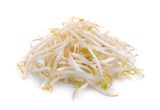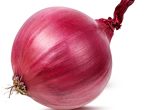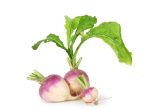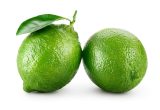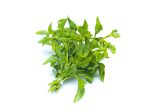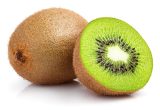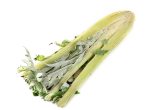Black radish

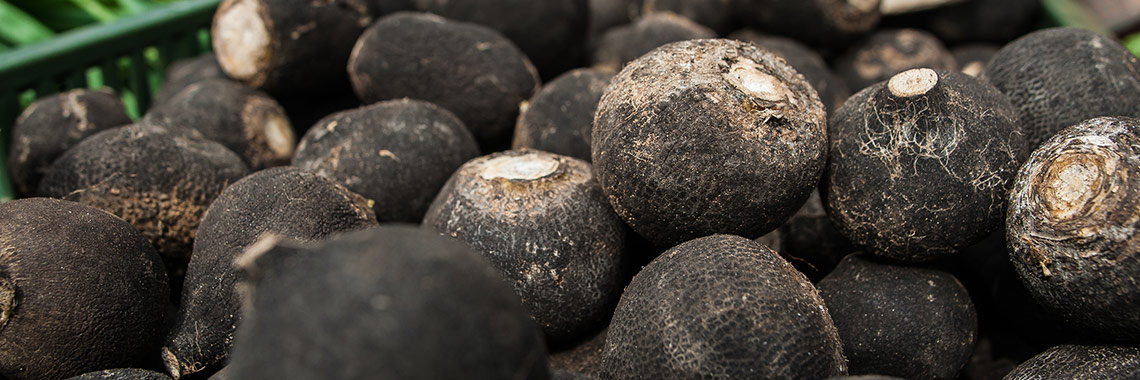
Description
Black radish (Raphanus sativus L. var. niger) belongs to the Brassicaceae family.
PHYSICAL AND ORGANOLEPTIC CHARACTERISTICS
- Despite its firmness, the black radish is fragile and its flesh tends to soften. Thus, it does not keep for long (Fondation Louis Bonduelle, 2020).
- Its flesh is white and its shell is black.
- This black colour is due to the presence of anthocyanins, including pelargonidin (acylated pelargonidin-3-sophoroside-5-glucoside) and cyanidin (acylated cyaniding3-sophoroside-5-glucoside) (Brauch, 2016 Singh, 2017).
- The presence of glucosinolates may be responsible for the pungent taste of radishes. They are transformed into isothiocyanates, compounds characteristic of the pungent taste of vegetables of the Brassicaceae family (N’jai, 2012; Lee, 2017; Ramirez, 2020).
COMPOSITION CHARACTERISTICS (excluding macronutrients, vitamins and minerals)
- Vegetables of the Brassicaceae family are known to be high in glucosinolates. Black radish has the highest content of glucosinolates, four times more than most other vegetables in the same family (N’jai, 2012).
- A total of six glucosinolates were identified and quantified in black radish: glucoraphenin, which is the most abundant, glucoraphasatin, glucosisautricin, glucoputrajivin, glucosisymbrin and gluconasturtiin (Ediage, 2011).
- Glucosinolates are hydrolysed by the intestine into isothiocyanates, which have a beneficial effect on health. Observational studies, supported by experimental cancer studies, have associated the consumption of vegetables rich in glucosinolates with a reduced risk of myocardial infarction and of lung, stomach, colorectal, breast, bladder and prostate cancer (Traka, 2016).
- Radish contains flavonoids (flavonones, flavanols and anthocyanins) and phenolic acids, giving it antioxidant and protective activity (Ahn, 2018 ; Manivannan, 2019).
- The flavonoids, phenolic acids and glucosinolates and isothiocyanates found in radish together help reduce the risk of cancer, heart disease and diabetes (Abellan A, 2019).
RAW
The following values are approximate and depend on variety, season, ripeness, cultivation conditions, etc. Black radish is low in energy*. It provides an average of 29.20 calories (kcal) per 100 g, i.e. 123 kJ. The average black radish weighs 250 g, which represents an energy intake of 72.50 calories (kcal).
COMPOSITION TABLES
For each nutrient, the tables provide information on the content, minimum and maximum values, as well as the percentage of the Dietary Reference Values (DRVs) for 100 g net of black radish.
* Regulation (EC) No 1924/2006 of the European Parliament and of the Council of 20 December 2006 on nutrition and health claims made on foods.
MACRONUTRIENTS
| Constituent (g) | Average content |
Min-Max per 100g |
DRV% |
|---|---|---|---|
| Water | 91,4 | - | - |
| Fibers | 1,20 | - | - |
| Carbohydrates | 5,52 | - | 2,12 |
| Sugars | 4,30 | - | 4,78 |
| Lipids | < 0,30 | - | - |
| Saturated fat | < 0,01 | - | - |
| Protein | 0,94 | - | 1,88 |
| Constituent (g) | Amount | Min-Max | DRV% |
|---|---|---|---|
| Water | Ciqual 2020 (valeur issue des analyses Ciqual-Aprifel 2018) | - | - |
| Fibers | Ciqual 2020 (valeur issue des analyses Ciqual-Aprifel 2018) | - | - |
| Carbohydrates | Ciqual 2020 | - | Règlement (UE) N°1169/2011 du parlement Européen, et du conseil du 25 octobre 2011 |
| Sugars | Ciqual 2020 (valeur issue des analyses Ciqual-Aprifel 2018) | - | Règlement (UE) N°1169/2011 du parlement Européen, et du conseil du 25 octobre 2011 |
| Lipids | Ciqual 2020 (valeur issue des analyses Ciqual-Aprifel 2018) | - | Règlement (UE) N°1169/2011 du parlement Européen, et du conseil du 25 octobre 2011 |
| Saturated fat | Ciqual 2020 (valeur issue des analyses Ciqual-Aprifel 2018) | - | Règlement (UE) N°1169/2011 du parlement Européen, et du conseil du 25 octobre 2011 |
| Protein | Ciqual 2020 | - | Règlement (UE) N°1169/2011 du parlement Européen, et du conseil du 25 octobre 2011 |
Zoom on carbohydrates
- Black radish contains 5.52 g of carbohydrates per 100 g.
- This is higher than the average amount of carbohydrates in raw vegetables: about 4.45 g per 100 g.
- These include glucose (2.60 g per 100 g), fructose (1.40 g per 100 g) and sucrose (0.30 g per 100 g).
- Black radish is low in sugar: 4.3 g of sugar per 100 g.
Zoom on fibres
- Black radish contains 1.20 g of fibre per 100 g.
- This amount is below the average quantity found in raw vegetables (2.43 g per 100 g).
Zoom on proteins
- Its protein content (0.94 g per 100 g) is lower than the average amount found in raw vegetables (1.87 g per 100 g).
Zoom on lipids
- With a fat content of less than 0.30 g per 100 g, black radish is fat-free.
MINERALS AND TRACE ELEMENTS
| Constituent | Average content |
Min-Max per 100g |
DRV% |
|---|---|---|---|
| Calcium (mg) | 39 | - | 4,88 |
| Chloride (mg) | 42,10 | - | 5,26 |
| Copper (mg) | < 0,01 | - | 1 |
| Iron (mg) | 0,23 | - | 1,64 |
| Iodine (µg) | < 20 | - | - |
| Magnesium (mg) | 10 | - | 2,67 |
| Manganese (mg) | 0,06 | - | 3 |
| Phosphorus (mg) | 32 | - | 4,57 |
| Potassium (mg) | 300 | - | 15 |
| Selenium (µg) | < 20 | - | - |
| Sodium (mg) | 23 | - | - |
| Zinc (mg) | 0,15 | - | 1,50 |
| Constituent | Amount | Min-Max | DRV% |
|---|---|---|---|
| Calcium (mg) | Ciqual 2020 (valeur issue des analyses Ciqual-Aprifel 2018) | - | Règlement (UE) N°1169/2011 du parlement Européen, et du conseil du 25 octobre 2011 |
| Chloride (mg) | Ciqual 2020 (valeur issue des analyses Ciqual-Aprifel 2018) | - | Règlement (UE) N°1169/2011 du parlement Européen, et du conseil du 25 octobre 2011 |
| Copper (mg) | Ciqual 2020 (valeur issue des analyses Ciqual-Aprifel 2018) | - | Règlement (UE) N°1169/2011 du parlement Européen, et du conseil du 25 octobre 2011 |
| Iron (mg) | Ciqual 2020 (valeur issue des analyses Ciqual-Aprifel 2018) | - | Règlement (UE) N°1169/2011 du parlement Européen, et du conseil du 25 octobre 2011 |
| Iodine (µg) | Ciqual 2020 (valeur issue des analyses Ciqual-Aprifel 2018) | - | Règlement (UE) N°1169/2011 du parlement Européen, et du conseil du 25 octobre 2011 |
| Magnesium (mg) | Ciqual 2020 (valeur issue des analyses Ciqual-Aprifel 2018) | - | Règlement (UE) N°1169/2011 du parlement Européen, et du conseil du 25 octobre 2011 |
| Manganese (mg) | Ciqual 2020 (valeur issue des analyses Ciqual-Aprifel 2018) | - | Règlement (UE) N°1169/2011 du parlement Européen, et du conseil du 25 octobre 2011 |
| Phosphorus (mg) | Ciqual 2020 (valeur issue des analyses Ciqual-Aprifel 2018) | - | Règlement (UE) N°1169/2011 du parlement Européen, et du conseil du 25 octobre 2011 |
| Potassium (mg) | Ciqual 2020 (valeur issue des analyses Ciqual-Aprifel 2018) | - | Règlement (UE) N°1169/2011 du parlement Européen, et du conseil du 25 octobre 2011 |
| Selenium (µg) | Ciqual 2020 (valeur issue des analyses Ciqual-Aprifel 2018) | - | Règlement (UE) N°1169/2011 du parlement Européen, et du conseil du 25 octobre 2011 |
| Sodium (mg) | Ciqual 2020 (valeur issue des analyses Ciqual-Aprifel 2018) | - | - |
| Zinc (mg) | Ciqual 2020 (valeur issue des analyses Ciqual-Aprifel 2018) | - | Règlement (UE) N°1169/2011 du parlement Européen, et du conseil du 25 octobre 2011 |
Zoom on minerals and trace elements
- Black radish is a source of potassium* because it provides the equivalent of 15% of DRVs, i.e. 300 mg per 100 g.
- The amount of other minerals and trace elements is less than 6% of DRVs.
* Regulation (EC) No 1924/2006 of the European Parliament and of the Council of 20 December 2006 on nutrition and health claims made on foods.
VITAMINS
| Constituent | Average content |
Min-Max per 100g |
DRV% |
|---|---|---|---|
| Provitamin A Beta-carotene (µg) | < 5 | - | - |
| Vitamin A equivalent (µg) | - | - | - |
| Vitamin B1 (mg) | 0,021 | - | 1,91 |
| Vitamin B2 (mg) | 0,016 | - | 1,14 |
| Vitamin B3 (mg) | 0,23 | - | 1,44 |
| Vitamin B5 (mg) | 0,14 | - | 2,33 |
| Vitamin B6 (mg) | 0,077 | - | 5,50 |
| Vitamin B9 (µg) | 17,30 | - | 8,65 |
| Vitamin C (mg) | 9,58 | - | 11,98 |
| Vitamin E (mg) | < 0,08 | - | - |
| Vitamin K1 (µg) | < 0,80 | - | - |
| Constituent | Amount | Min-Max | DRV% |
|---|---|---|---|
| Provitamin A Beta-carotene (µg) | Ciqual 2020 (valeur issue des analyses Ciqual-Aprifel 2018) | - | - |
| Vitamin A equivalent (µg) | - | - | Règlement (UE) N°1169/2011 du parlement Européen, et du conseil du 25 octobre 2011 |
| Vitamin B1 (mg) | Ciqual 2020 (valeur issue des analyses Ciqual-Aprifel 2018) | - | Règlement (UE) N°1169/2011 du parlement Européen, et du conseil du 25 octobre 2011 |
| Vitamin B2 (mg) | Ciqual 2020 (valeur issue des analyses Ciqual-Aprifel 2018) | - | Règlement (UE) N°1169/2011 du parlement Européen, et du conseil du 25 octobre 2011 |
| Vitamin B3 (mg) | Ciqual 2020 (valeur issue des analyses Ciqual-Aprifel 2018) | - | Règlement (UE) N°1169/2011 du parlement Européen, et du conseil du 25 octobre 2011 |
| Vitamin B5 (mg) | Ciqual 2020 (valeur issue des analyses Ciqual-Aprifel 2018) | - | Règlement (UE) N°1169/2011 du parlement Européen, et du conseil du 25 octobre 2011 |
| Vitamin B6 (mg) | Ciqual 2020 (valeur issue des analyses Ciqual-Aprifel 2018) | - | Règlement (UE) N°1169/2011 du parlement Européen, et du conseil du 25 octobre 2011 |
| Vitamin B9 (µg) | Ciqual 2020 (valeur issue des analyses Ciqual-Aprifel 2018) | - | Règlement (UE) N°1169/2011 du parlement Européen, et du conseil du 25 octobre 2011 |
| Vitamin C (mg) | Ciqual 2020 (valeur issue des analyses Ciqual-Aprifel 2018) | - | Règlement (UE) N°1169/2011 du parlement Européen, et du conseil du 25 octobre 2011 |
| Vitamin E (mg) | Ciqual 2020 (valeur issue des analyses Ciqual-Aprifel 2018) | - | Règlement (UE) N°1169/2011 du parlement Européen, et du conseil du 25 octobre 2011 |
| Vitamin K1 (µg) | Ciqual 2020 (valeur issue des analyses Ciqual-Aprifel 2018) | - | Règlement (UE) N°1169/2011 du parlement Européen, et du conseil du 25 octobre 2011 |
Zoom on vitamins
- Black radish contains a notable quantity of vitamin C because it brings the equivalent of 11.98% of DRVs, i.e. 9.58 mg per 100 g.
- It also provides the equivalent of 8.65% of DRVs for vitamin B9, i.e. 17.30 µg per 100 g.
- The quantity of other vitamins represents less than 6% of DRVs.
*Calculation made: Beta Carotene / 6 + retinol
POLYPHENOLS
| Constituent (mg) | Average content |
Min-Max per 100mg |
|---|---|---|
| Flavonoids (mg) | 2,11 | 2,11 - 2,11 |
| of which Flavonols (mg) | 2,11 | 2,11 - 2,11 |
| Total polyphenols | 2,11 | 2,11 - 2,11 |
| Constituent (mg) | Amount | Min-Max |
|---|---|---|
| Flavonoids | Phénol-Explorer version 3.6- Méthode utilisée : Chromatographie après hydrolyse | - |
| of which Flavonols | Phénol-Explorer version 3.6- Méthode utilisée : Chromatographie après hydrolyse | - |
| Total polyphenols | Phénol-Explorer version 3.6- Méthode utilisée : Chromatographie après hydrolyse | - |
Zoom on polyphenols
- Polyphenols are substances with an antioxidant effect.
- According to the chromatography method after hydrolysis, flavonols, a subgroup of flavonoids, are the only polyphenols found in black radish.
Nutrition and health claims
According to the definitions of nutrition claims as presented in Regulation (EC) No 1924/2006 on nutrition and health claims, and in view of the composition of black radish, the following claims may be used:
NUTRITION CLAIMS OF BLACK RADISH
- Low in energy (100 g of black radish provide less than 40 calories (kcal))
- Source of potassium (100 g of black radish provide more than 15% of DRVs)
- Fat-free (100 g of black radish contain less than 0.30 g of fat)
- Low in sugar (100 g of black radish contain less than 5 g of sugar)
HEALTH CLAIMS (for a consumption of 100 g of black radish)
Potassium
- Potassium contributes to:
- normal functioning of the nervous system,
- normal muscle function,
- maintenance of normal blood pressure.
References
- Agence nationale de sécurité sanitaire de l’alimentation, de l’environnement et du travail. Table de composition nutritionnelle des aliments Ciqual 2020. Consultée le 10/09/2020 depuis le site internet Ciqual https://ciqual.anses.fr/
- Abellan A, Domininguez-Perles R, Moreno D, Garcia-Viguera C. Sorting out the Value of Cruciferous Sprouts as Sources if Bioactive Compounds for Nutrition and Health. Nutrients. 2019;11(2), 429
- Ahn M, Kim J, Hong S, Kim J, Ko H, Lee NH, … Shin T. Black Radish (Raphanus sativus L. var. niger) Extract Mediates Its Hepatoprotective Effect on Carbon Tetrachloride-Induced Hepatic Injury by Attenuating Oxidative Stress. Journal of Medicinal Food. 2018;21(9):1–10
- Brauch, J. E (2016). Underutilized Fruits and Vegetables as Potential Novel Pigment Sources (p305–335). Handbook on Natural Pigments in Food and Beverages, Editors: Reinhold Carle Ralf Schweiggert. 538p
- Ediage EN, Di Mavungu JD, Scippo ML, Schneider YJ, Larondelle Y, Callebaut A, Robbens J, Van Peteghem C, De Saeger S. Screening, identification and quantification of glucosinolates in black radish (Raphanus sativus L. niger) based dietary supplements using liquid chromatography coupled with a photodiode array and liquid chromatography-mass spectrometry. J Chromatogr A. 2011;1218(28):4395-405.
- Fondation Louis Bonduelle. Le radis noir. [En ligne] [Consulté le 02 avril 2020] Disponible à l’adresse : http://www.fondation-louisbonduelle.org/legume/radis-noir/
- Lee JG, Lim S, Kim J, Lee EJ. The mechanism of deterioration of the glucosinolate-myrosynase system in radish roots during cold storage after harvest. Food Chem. 2017;233:60-8.
- Manivannan, A., Kim, J.-H., Kim, D.-S., Lee, E.-S., & Lee, H.-E. Deciphering the Nutraceutical Potential of Raphanus sativus—A Comprehensive Overview. Nutrients. 2019 ; 11(2) : 402.
- Neveu V, Perez-Jiménez J, Vos F, Crespy V, du Chaffaut L, Mennen L, Knox C, Eisner R, Cruz J, Wishart D, Scalbert A. (2010) Phenol-Explorer: an online comprehensive database on polyphenol contents in foods. Database, doi: 10.1093/database/bap024. Full text (free access)
- N’jai AU, Kemp MQ, Metzger BT, Hanlon PR, Robbins M, Czuyprynski C, Barnes DM. Spanish black radish (Raphanus sativus L. Var. niger) diet enhances clearance of DMBA and diminishes toxic effects on bone marrow progenitor cells. Nutr Cancer. 2012;64(7):1038-48.
- Ramirez D, Abellán-Victorio A, Beretta V, Camargo A, Moreno DA. Functional Ingredients From Brassicaceae Species: Overview and Perspectives. Int J Mol Sci. 2020;21(6).
- Règlement (CE) N° 1924/2006 du Parlement européen et du Conseil du 20 décembre 2006 concernant les allégations nutritionnelles et de santé portant sur les denrées alimentaires.
- Règlement (UE) N°432/2012 de la Commission du 16 mai 2012 établissant une liste des allégations de santé autorisées portant sur les denrées alimentaires, autres que celles faisant référence à la réduction du risque de maladie ainsi qu’au développement et à la santé infantiles.
- Règlement (UE) n°1169/2011 du Parlement européen et du Conseil du 25 octobre 2011 concernant l’information des consommateurs sur les denrées alimentaires, modifiant les règlements (CE) n°1924/2006 et (CE) n°1925/2006 du Parlement européen et de Conseil et abrogeant la directive 87/250/CEE de la Commission, la directive 90/496/CEE du Conseil, la directive 1999/10/CE de la Commission, la directive 200/13/CE du Parlement européen et du Conseil, les directives 2002/67/CE et 2008/5/CE de la Commission et le règlement (CE) n°608/2004 de la Commission.
- Singh BK, Koley TK, Karmakar P, Tripathi A, Singh B, Singh M Pigmented radish (Raphanus sativus): Genetic variability, heritability and interrelationships of total phenolics, anthocyanins and antioxidant activity. Indian Journal of Agricultural Sciences. 2017 ; 87(12):1600-6.
- Traka MH. Health Benefits of Glucosinolates. Advances in Botanical Research. 2016 (9): 246-279





